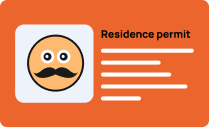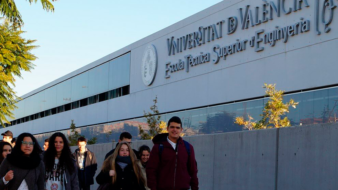Turnkey relocation to Spain from 6 weeks
We will help you to obtain a Spanish residence permit for the whole family with a minimum tax burden!
Read more
Get a free consultation
From 0 €
Tax burden per month
From 6 weeks
Term for obtaining a residence permit
5 years
Until permanent residence permit


The Most Detailed Guide to Getting a Student Visa in Spain for Language School Studies
If you truly want to learn Spanish, experience the local culture, and gain tons of impressions and practice — but don’t want to commit to long-term obligations — your best choice is a student visa.
Go back to the blog
How do you choose a language school, pass the interview, and collect the necessary documents?
Most schools teach the literary Castilian dialect — the European version of Spanish as commonly understood. However, Spain is also home to other languages: Catalan, Basque, and Galician. Many autonomous regions have their own dialects as well. You can’t really compare it to other countries — for instance, if you meet someone from Andalusia (a region in southern Spain), they’ll likely understand you perfectly, but you might not understand them due to their distinct pronunciation. That said, the grammar and vocabulary base across Spanish dialects is mostly the same. So, if you’re starting out (A0–B1 level), you can confidently choose a school in any region of Spain.Choosing an Agency and a School
You can either find a school on your own via the internet or go through an agency. Here are some advantages of using an agency:- All offers are already sorted and clearly presented. No need to browse Spanish websites, translate them, and figure out which schools are accredited.
- Easy comparison of prices, programs, and locations.
- You can choose dates and prices that work for you — hassle-free.
- The agency will contact the school and book a spot on your behalf.
- Agencies can also prepare your documents for the visa application and may even submit your student residence permit (TIE) request in Spain using their electronic signature. No need to go to the immigration office yourself.
What to Look for When Choosing a School
- Accreditation from the Cervantes Institute – If the school is not accredited, you cannot apply for a student visa through it. The Cervantes Institute regulates Spanish language teaching for foreigners, and accredited schools use the most advanced methods.
- Negative reviews – Even if a school has a 4.5 rating, if there are too many complaints, you could end up disappointed and lose your money.
- Location – Choose based on what matters to you: close or far from the city center, proximity to the metro, historic district, modern infrastructure, etc.
- Cultural activities – You’ll study about 5 hours a day, so check if the school offers extracurricular cultural programs. The more events, the better!
- Housing options provided by the school – You can always rent a room yourself, but having school-arranged housing is easier, especially since landlords are often reluctant to rent to foreigners without residency.
Once You’ve Chosen – Pay the Fee
Schools usually require full upfront payment (via cash, card, or bank transfer) since it’s part of the visa or TIE application process. If your visa is denied, the entire amount (minus a €150 service fee) is refundable.Enrollment Process
After applying, the school will contact you. If you already have basic Spanish knowledge, they may ask you to take a grammar test or submit a short video presentation or text in Spanish to better assess your level. Then, they’ll confirm your level and send you a class schedule and program details. Courses in Spain follow the CEFR (MCER in Spanish) system, from A1 to C1, where A1 is beginner. After each level, you can take the DELE exam and receive an official certificate recognized by Spanish government institutions. For example:- Spanish citizenship requires level A2
- University admission requires level B2
How to Get a Student Visa for Spain in 2024
To enter Spain, there are two main types of visas: Type C and Type D.- Visa C is a standard Schengen visa for stays of up to 90 days within any 180-day period. You can apply at the BLS Visa Center. The document list is available on their website.
- Visa D is a national visa that allows you to stay for more than 90 days. To apply for this visa, in addition to proof of course payment, you’ll need:
- A medical certificate in format 082 or 086
- Police clearance certificates from all countries you’ve lived in over the past 5 years
- A bank statement showing at least €8,000
- Payment of the visa fee
- If your course is less than 6 months, it’s better to get a standard Visa D through the visa center.
- If your course is 7 months or more, you’ll need to request a residence permit directly in Spain.
Housing Options
Students typically consider three options: renting an apartment, renting a room from locals, or staying in school-provided accommodation.Renting a Private Apartment
Good for those who want privacy. Pros: your own bathroom, kitchen, etc. Cons: cost — a studio apartment can range from €400 (Seville) to €1,100 (Barcelona) depending on the city and area. Also, it’s harder to immerse yourself in local life.Renting a Room from Locals
An excellent and affordable option. Pros: low price (€200–€400/month), and a great way to experience everyday Spanish life. Cons: you’ll share a fridge and other amenities with housemates.School-Provided Housing
Usually includes:- A private room with a shared bathroom — ~€140/week
- A room with a private bathroom — ~€190/week


 12/05/2025
12/05/2025  Reading time: 7 min
Reading time: 7 min 





